Introduction
Migrating applications to the cloud is a complex process that requires careful planning and strategic decision-making. In this article, we will explore the seven key steps to successfully migrate applications to the cloud. From defining objectives and goals to testing and validating the migration, each step plays a crucial role in ensuring a seamless transition.
We will delve into the importance of assessing application suitability, choosing the right cloud service provider, and planning the data migration strategy. Additionally, we will discuss the evaluation and optimization of application architecture and the development of a comprehensive migration plan. Finally, we will highlight the significance of testing and validating the migration to avoid disruptions in service.
By following these steps, organizations can maximize the benefits of cloud technologies and achieve their broader business objectives. So let's dive in and explore the intricacies of migrating applications to the cloud.
Step 1: Define Your Objectives and Goals
Establishing a clear set of objectives and goals for transferring software to the cloud is a foundational step, as it lays the groundwork for the entire migration journey. It is crucial to determine what your organization intends to achieve through this transition and ensure it aligns with the broader business goals. Whether it's achieving greater IT cost efficiencies, enhancing operational agility, or tapping into advanced technologies like generative AI, each goal should be well-defined. This clear understanding of the objective is not only important for directing the technical elements of the process, such as assessing the suitability of your existing technology stack and the features of your programs but also for aligning with important business factors like adaptability, versatility, and creativity.
In practice, as seen in the multiprovider strategy adopted by one company, success involved fostering early collaboration across organizational boundaries and focusing keenly on security. Similarly, Chess.com's strategy for transitioning, supported by a mission to support and expand the worldwide chess community, shows how aligning IT infrastructure goals with company values can reach wider audiences and promote connections.
Furthermore, David S. Linthicum, a specialist in the field, highlights the significance of readiness assessments from a technology perspective, which includes examining the current technology stack, architecture, and data. It is crucial to bear in mind that some software developed on distinct hardware that cannot be virtualized may present substantial difficulties when transferring.
Additionally, it is prudent to consider the financial implications over a longer time horizon. Executives are encouraged to not only focus on expenses but also calculate the total cost of ownership and return on investment over a prolonged period, such as five years, to truly assess the benefits of shifting to the cloud.
Ultimately, the strategy should prioritize applications and workflows based on business needs, blending automation with manual processes for a dynamic planning approach. This intentional and strategic planning is crucial, as shown by recent discoveries that 25% of UK organizations have had to bring back workloads from the cloud to on-site solutions, highlighting the intricacy of decisions related to cloud transfer. By establishing distinct objectives and strategically organizing, organizations can evade possible complications and optimize their return on investment in technological innovations.
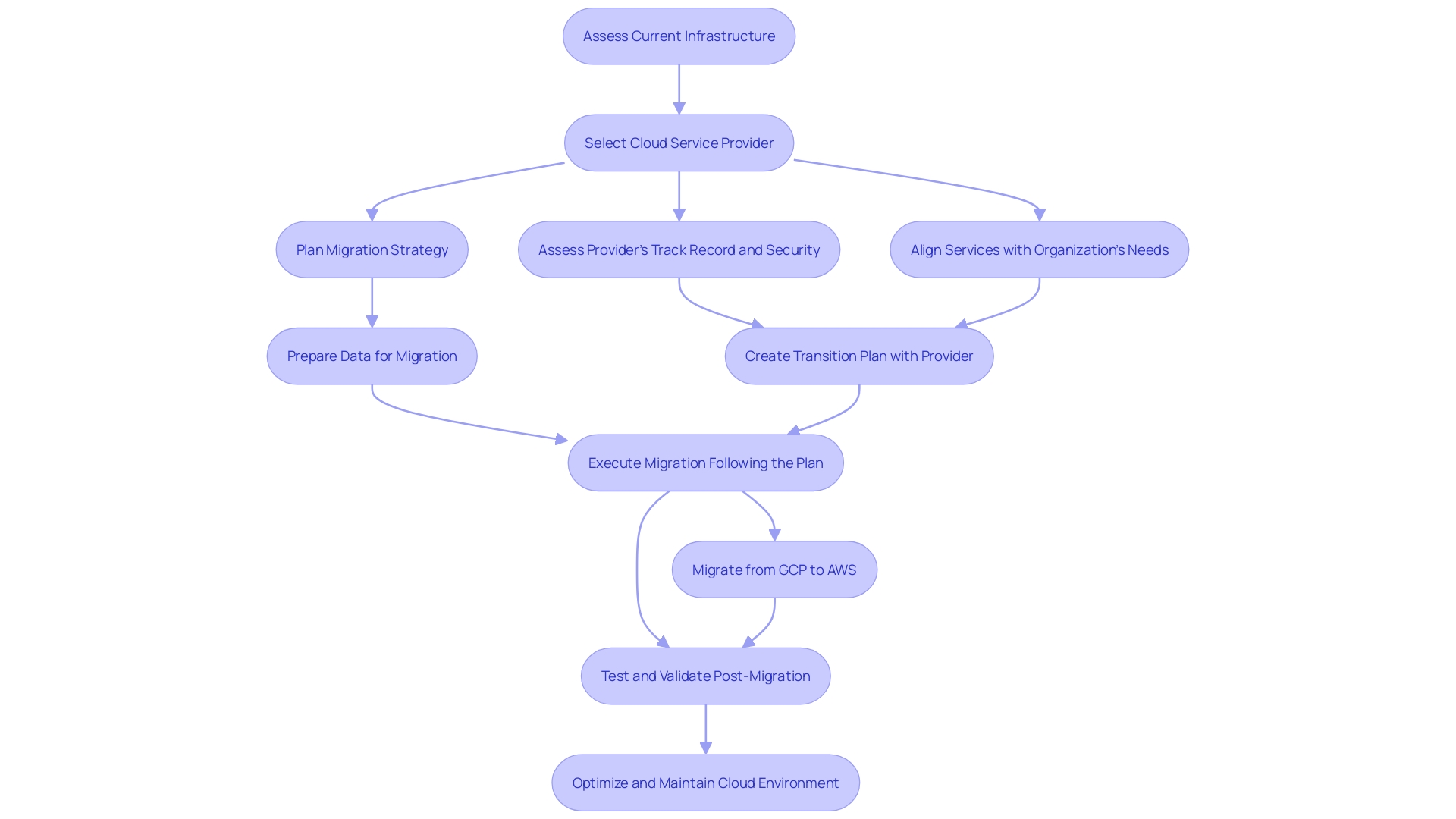
Step 2: Assess Application Suitability
Prior to starting migration to the skies, it is essential to conduct a Readiness Assessment that focuses on your technology landscape. This evaluation should examine the current technology stack, the unique attributes of your applications, system architecture, and data setup. Such diligence is crucial, particularly for programs tethered to specialized hardware that lacks a cloud equivalent or cannot be virtualized, like certain IoT applications or cryptocurrency cold wallets.
The strategic approach towards movement of people also demands a thorough understanding of application complexity, dependencies, and adherence to regulatory frameworks. For instance, Chess.com's expansion and ability to serve a global community of over 150 million users relied on a robust IT infrastructure that balanced on-premises and cloud solutions. Likewise, a successful strategy for transitioning must encompass these diverse elements while ensuring security protocols align with current standards and the potential impact on end-users is minimized.
By implementing a multiprovider and multipartner strategy, as observed in certain successful transitions, it can aid in achieving a seamless transfer. Collaboration with partners early in the process is paramount to address security concerns and meet compliance needs. In addition, developing a comprehensive playbook for information sharing within the company can democratize the transfer process.
Applications should be prioritized based on business imperatives, taking into account processing times and sensitivity. By combining automation with manual oversight, a dynamic transfer plan can be established, tailored to the unique requirements of the organization's IT assets, which vary in cost, performance, and complexity.
Considering the current market investigations into services provided over the internet, such as the one initiated by the UK's Competition and Markets Authority (CMA) in October 2022, it's evident that staying updated on sector advancements and possible competition concerns is crucial. This awareness can ensure that your migration strategy remains forward-thinking and competitive in an evolving digital landscape.
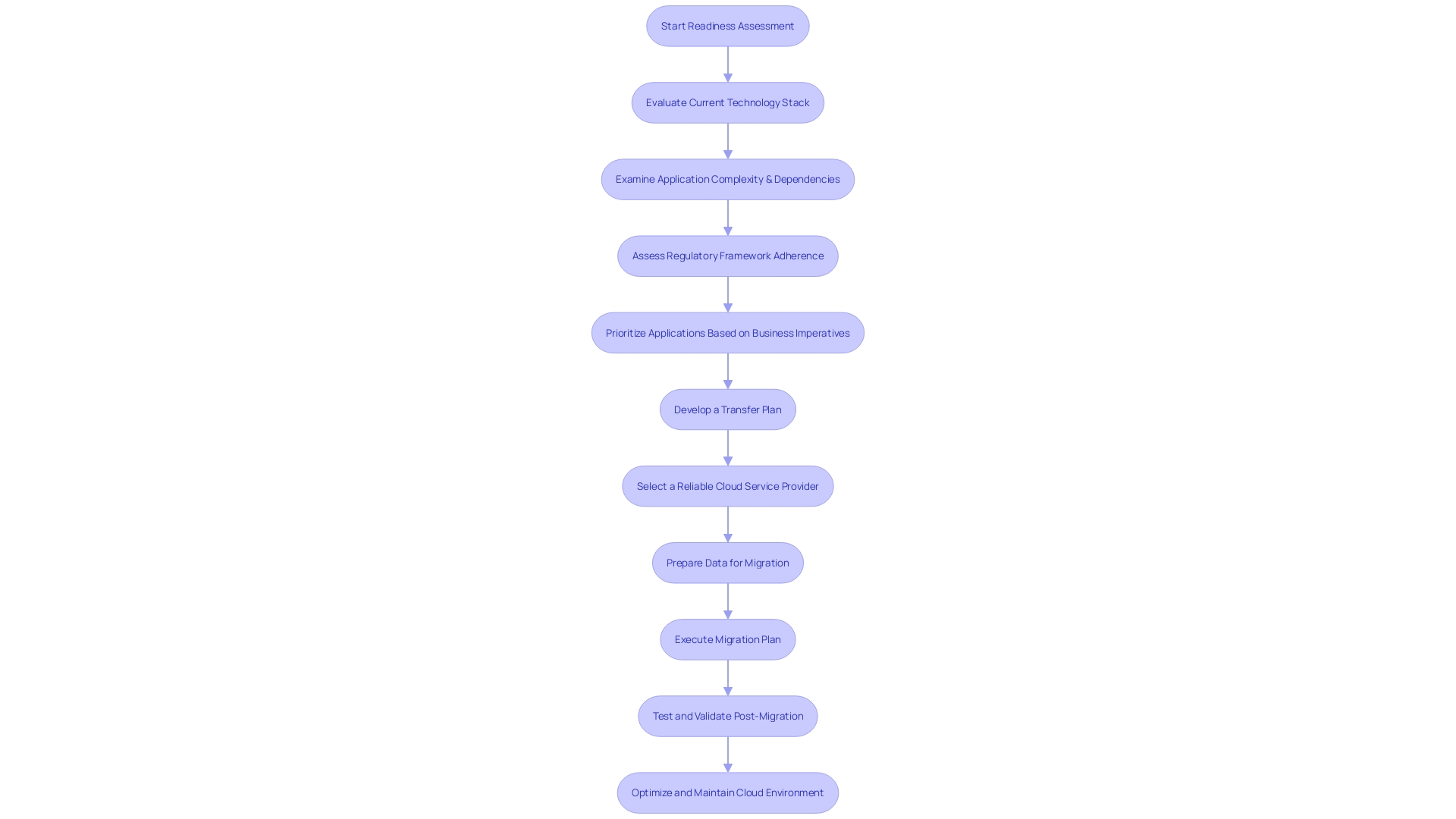
Step 3: Choose the Right Cloud Service Provider
Selecting the appropriate service provider is an essential step in leveraging cloud capabilities for the growth and digital transformation of your organization. A provider that offers both reliability and scalability is essential to adapt to changing demands and ensure continuous operation. Safety is non-negotiable; hence, identifying providers with robust security protocols is crucial to safeguard your information and comply with industry regulations. Moreover, the pricing model should be transparent and predictable to align with your financial planning. Cloud service providers like DigitalOcean have recognized the distinct needs of start-ups, ISVs, and SMBs, providing tailored services that support their development and scaling processes. With the market's evolution, driven by the adoption of mobile technologies, big data, hybrid clouds, and advancements in AI and cybersecurity, it’s crucial to partner with a provider that not only meets current needs but is also equipped to accommodate future technological shifts. As infrastructure becomes more integral to business operations, selecting a provider becomes a strategic decision that can significantly influence your competitive advantage in the marketplace.
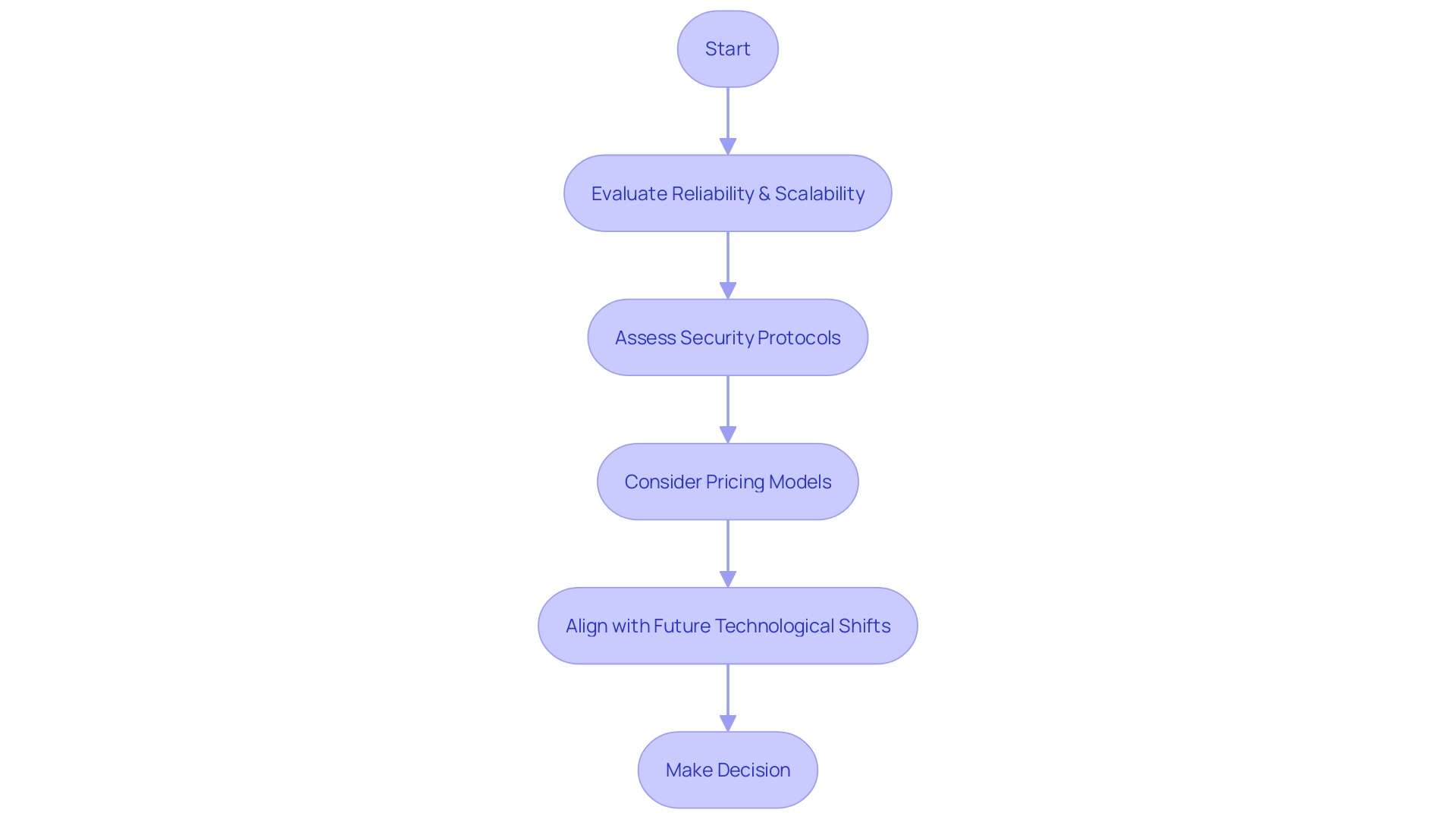
Step 4: Plan Your Data Migration Strategy
Creating a sturdy migration plan is essential for a seamless transition to cloud services. It starts with a thorough assessment of your existing technology stack, including the architecture, data, and characteristics of the software. This step is crucial, particularly for unique hardware-dependent applications that might face challenges in cloud virtualization. When planning a migration, especially in scenarios like shifting from Google Cloud Platform to Amazon Web Services, it's essential to consider the enhanced scalability, cost management, and broader service offerings that a successful migration can deliver.
Your strategy should encompass a comprehensive identification and categorization of information to ensure a seamless transfer and integration process. Addressing the process of cleaning and curation is crucial before sharing, as recommended by industry experts. The different stages—preparation, actual information transfer, and post-relocation quality assurance—must be carefully followed to prevent information loss and the resulting functionality problems in the new setting.
Furthermore, the effectiveness of cloud adoption relies heavily on system performance, including factors like availability and latency. Providers typically offer high uptime guarantees and solutions to optimize latency, such as data storage closer to users and dedicated network connections.
Lastly, the migration strategy should align with the organization's broader goals, like digital transformation and growth, while also addressing key considerations such as cost, performance, and complexity of IT assets. This strategic alignment, combined with a provider that provides robust security measures and a variety of relevant services, will establish the groundwork for a successful transition to the online storage.
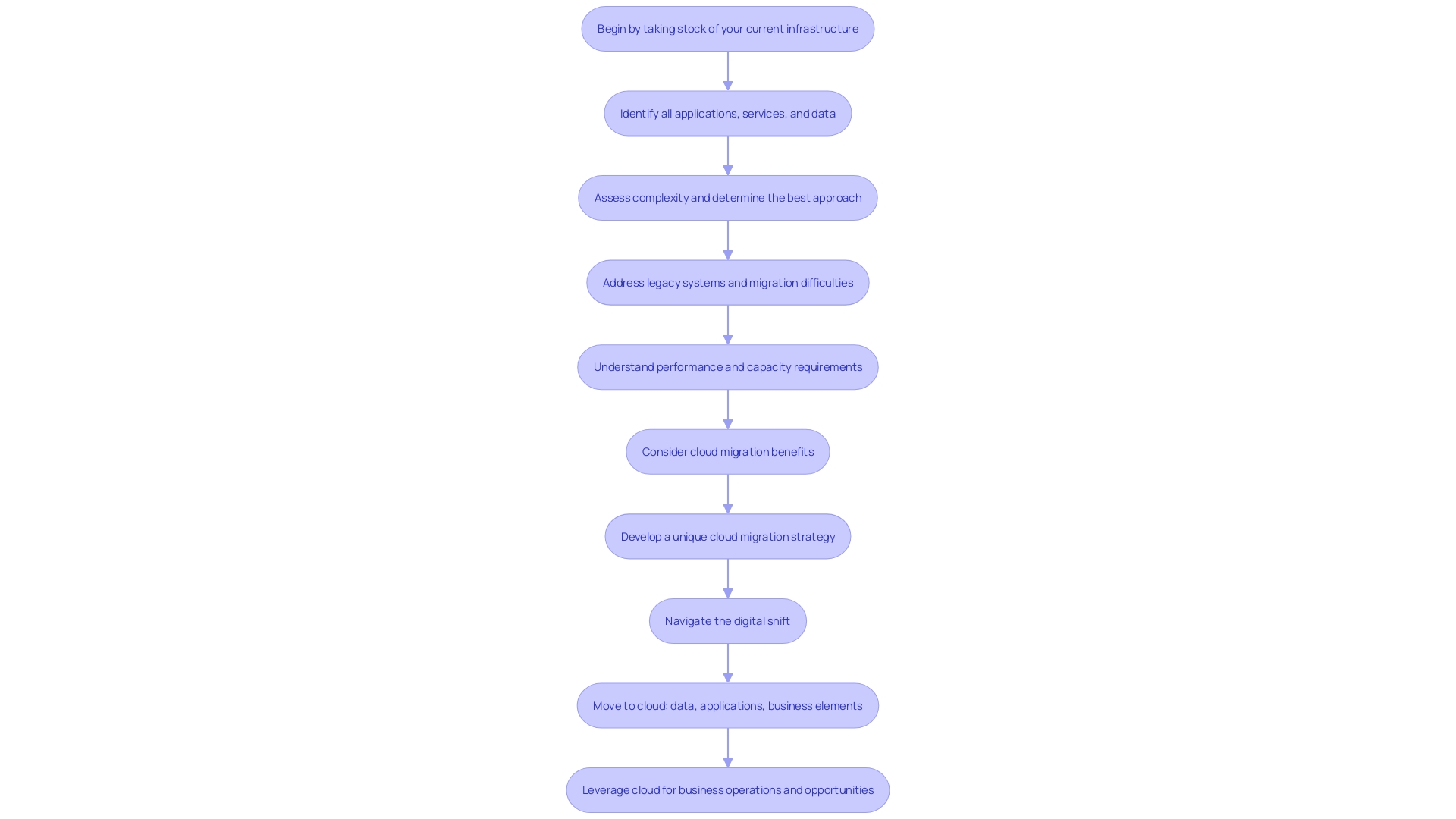
Step 5: Evaluate and Optimize Application Architecture
To guarantee that your software flourishes in a cloud environment, it is crucial to evaluate and enhance its structure. This involves considering crucial elements such as scalability to handle varying loads, resilience to withstand infrastructure failures, and performance to provide a seamless user experience. It may become necessary to redesign or refactor your software to fully embrace cloud capabilities. This could mean implementing a multi-region architecture for global service availability, as observed in scenarios where software must ensure high availability across different countries with varying regulatory requirements.
Incorporating insights from the Azure Well-Architected Framework, one should strive to construct deployments that balance security, reliability, and performance, all while being mindful of cost-efficiency and sustainability. Real-world cases, such as the e-commerce portal designed for customers in Africa, underscore the importance of low-latency, secure data storage, and fast retrieval, in addition to high availability and fault tolerance, even when budget constraints exist.
The chosen deployment approach will greatly impact the stability and speed of your software. For instance, deploying software with modern standards often means enabling automated, continuous updates to meet dynamic user expectations. As articulated by industry experts, a collaborative approach to architectural decisions, avoiding the 'Highest Paid Person’s Opinion' syndrome, fosters a more robust outcome that aligns with diverse business goals and technical requirements.
By leveraging comprehensive guidance, like that offered at the Microsoft Fabric Community Conference, organizations can optimize their workloads in the cloud and extract maximum value from their cloud investment. Whether it's reshaping data access and management or navigating through the exponential growth of data, the architecture of your application plays a pivotal role in transforming data into actionable insights and achieving the overarching business objectives.
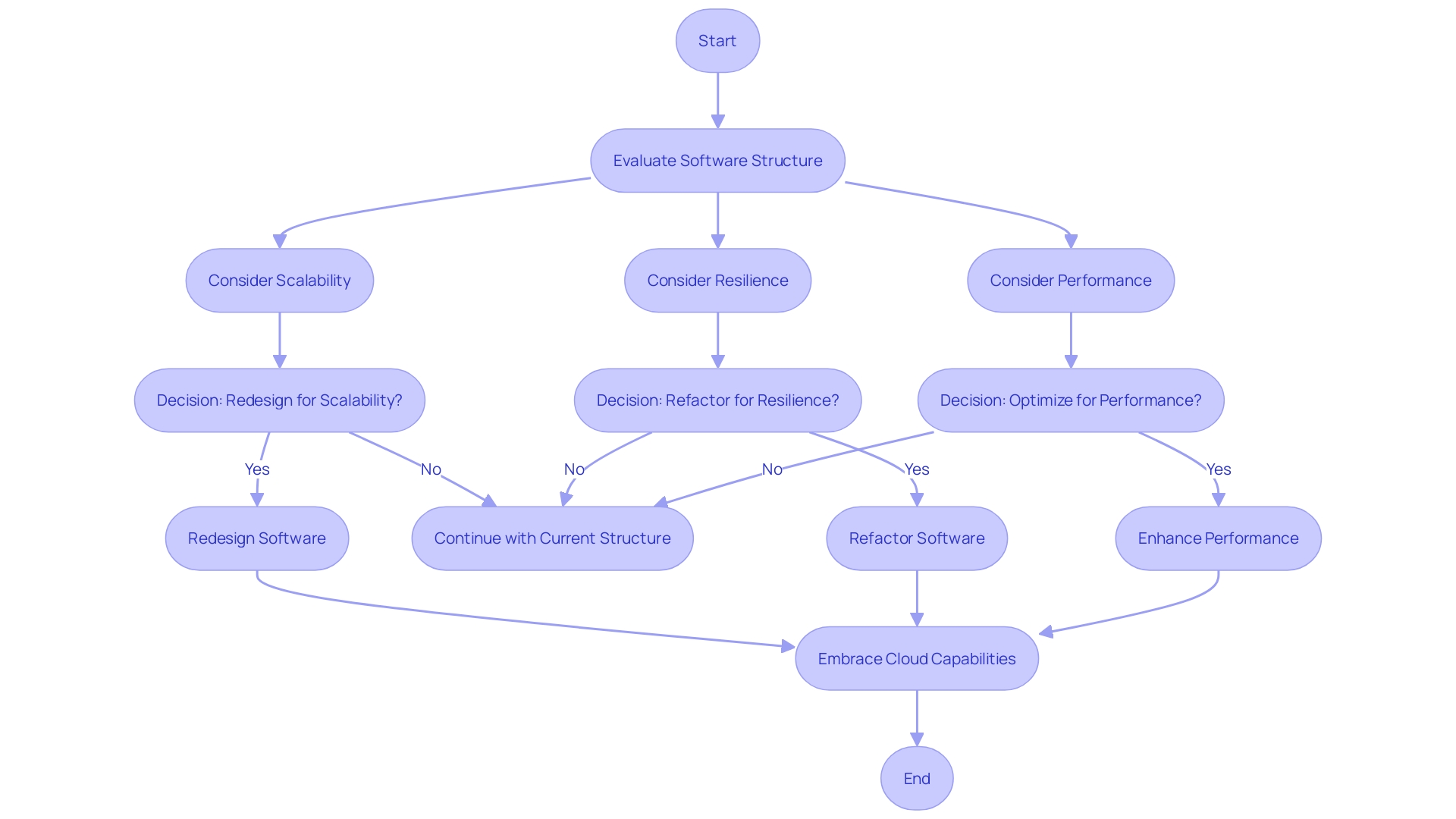
Step 6: Develop a Migration Plan
Creating a thorough cloud transition plan is crucial for organizational progress in today's digital environment. This strategy must encompass meticulous planning that delineates each stage of the journey, with clear timelines and resource allocation. A thoughtful examination of interdependencies among applications, rigorous testing protocols, and preemptive identification of potential hurdles will contribute to a streamlined and efficacious transition to cloud-based operations. Companies such as Aspirin, with their complex information analysis for educational institutions, Chess.com with its extensive global user base, and Delivery Hero managing extensive employee interactions, all emphasize the crucial importance of a well-designed transition plan that caters to specific business requirements and minimizes uncertainty. These examples demonstrate the importance of ensuring operational continuity and leveraging the full spectrum of benefits from cloud computing, whether it involves safeguarding a comprehensive data repository or maintaining uninterrupted service delivery, the plan for transitioning to the cloud serves as the blueprint.
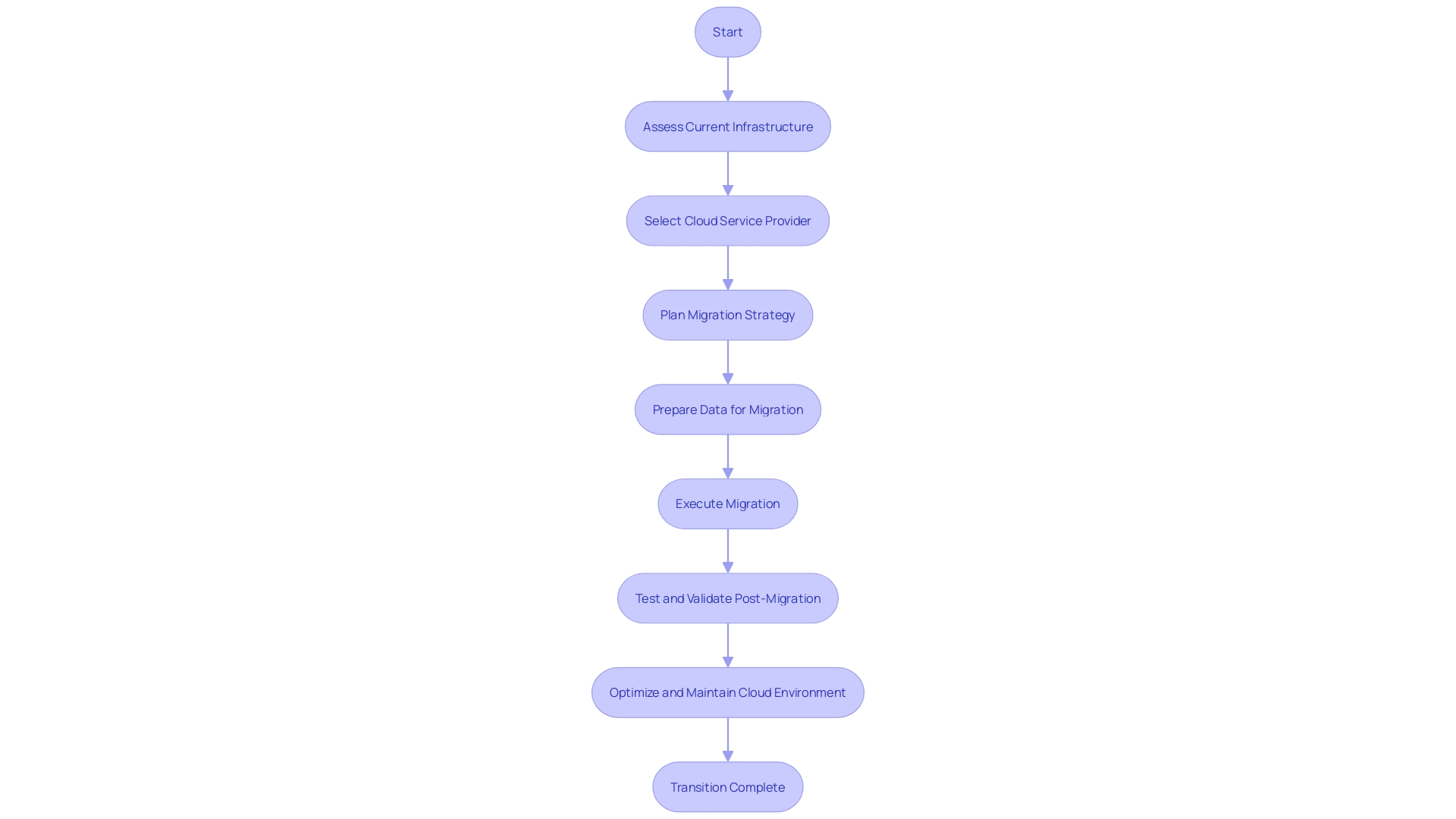
Step 7: Test and Validate the Migration
Prior to completely shifting your software to the online platform, it is vital to thoroughly examine and authenticate the transfer to prevent any interruptions in functionality. This necessitates a meticulous assessment of the functionality of your system within the cloud infrastructure, ensuring that performance, security, and scalability meet or exceed current standards. As per David S. Linthicum, a globally acknowledged industry specialist, the intricacy of your technology stack and the distinct attributes of your software can significantly impact the process of moving. For example, software linked to specialized hardware that lacks a cloud counterpart present a significant challenge. Furthermore, as highlighted in the 'World Quality Report', a strategic approach to quality engineering and testing is essential for optimizing the software lifecycle. A successful migration strategy also entails a dynamic planning process, as seen in a case where a multiprovider strategy was implemented, underscoring the importance of collaboration and security considerations. With AI increasingly impacting enterprise IT, as discussed in a recent webinar, ensuring your software harnesses these advances while maintaining data privacy is also paramount. As the utilization of cloud technology expands, platforms such as Azure are continuously evolving, offering AI tools like Microsoft Copilot to enhance productivity while ensuring the security of software. Therefore, thorough testing and validation not only prepare your application for a seamless cloud integration but also set the stage for leveraging future technological innovations.
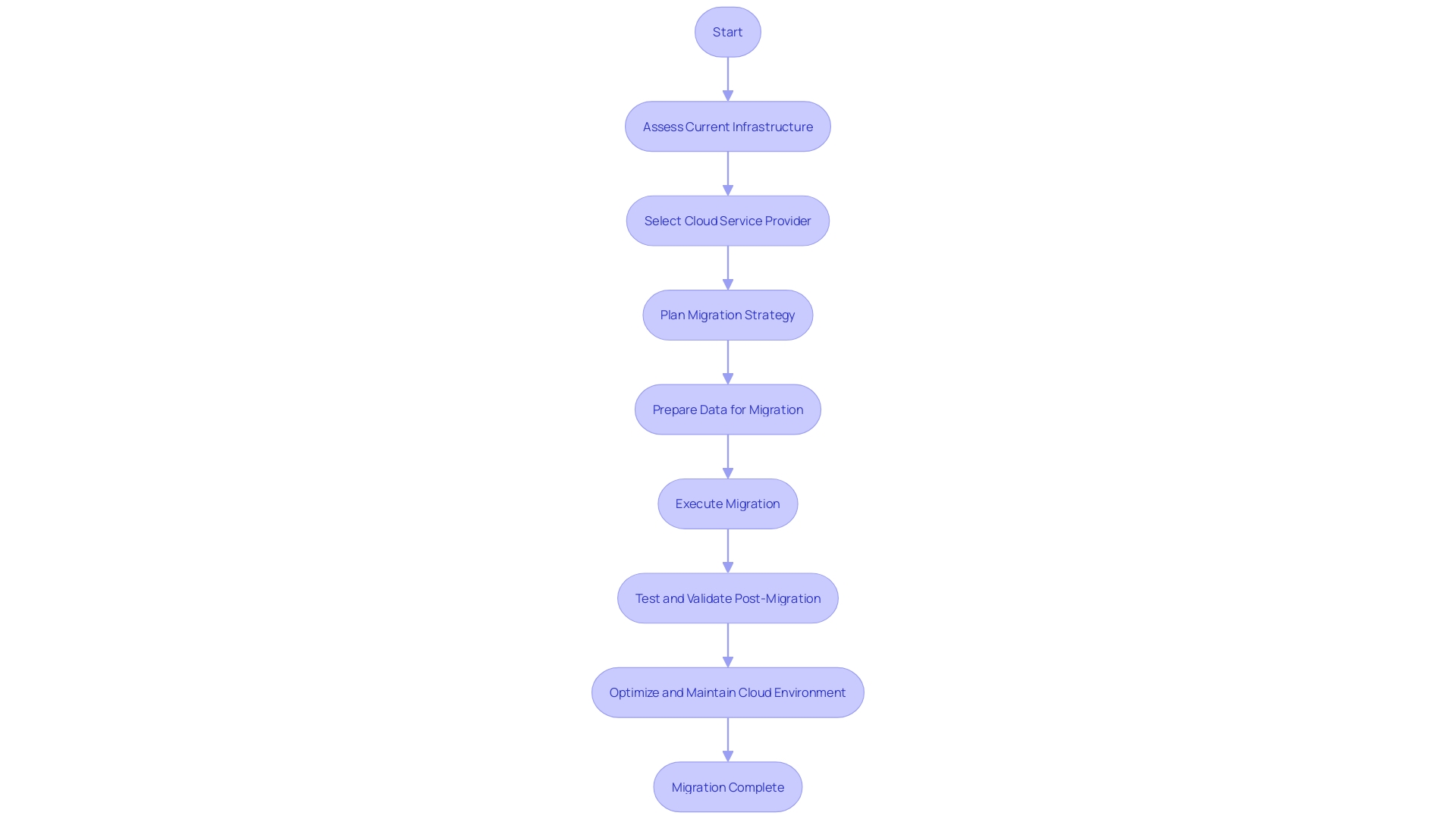
Conclusion
In conclusion, successful cloud migration requires careful planning and strategic decision-making. By following the seven key steps outlined in this article, organizations can ensure a seamless transition and maximize the benefits of cloud technologies.
Defining clear objectives and goals is crucial, aligning them with broader business objectives and prioritizing applications based on business needs.
Choosing the right cloud service provider is critical, considering reliability, scalability, and robust security protocols.
Planning the data migration strategy involves evaluating the current technology stack, categorizing data, and addressing system performance considerations.
Evaluating and optimizing application architecture is imperative, considering scalability, resilience, and performance.
Developing a comprehensive migration plan with clear timelines and resource allocation is essential.
Thorough testing and validation are crucial to ensuring performance, security, and scalability meet or exceed standards.
By following these steps, organizations can successfully navigate cloud migration and fully leverage the benefits of cloud technologies. With careful planning and strategic decision-making, organizations can achieve their business objectives and thrive in the cloud environment.




